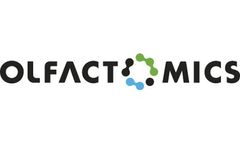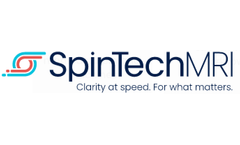Brain Tumours Articles & Analysis: Older
25 articles found
Breast cancer remains one of the most prevalent malignancies affecting women worldwide, necessitating innovative approaches for effective treatment and research. Among the most promising strategies in this endeavor are the use of tumor models for breast cancer and the development of customized antibody-drug conjugates (ADCs). These advancements not only enhance our understanding of the disease ...
Alfa Cytology has introduced its advanced drug development services for brain tumors. Alfa Cytology, celebrated for its cutting-edge biotech solutions and extensive tumor research expertise, has recently introduced brain tumor drug development services, designed to empower researchers in understanding the intricacies and unique challenges associated with brain tumors. Brain tumors represent a ...
Brain tumors can be broadly categorized into primary and secondary (or metastatic) tumors. Primary tumors originate in the brain1, while secondary tumors spread from other body parts. Treatment options traditionally include surgery, radiation therapy, and chemotherapy. However, these approaches can be invasive and have severe side effects. The battle against brain tumors is being ...
Polyethylene glycol (PEG) derivatives have become pivotal in the pharmaceutical industry, revolutionizing drug delivery systems and enhancing the efficacy of various therapeutic agents. The unique properties of PEG derivatives, including their biocompatibility and ability to modify the solubility, stability, and bioavailability of drugs, make them indispensable in modern pharmacology. This ...
When it comes to the fascinating world of proteins, some names like collagen or hemoglobin might ring a bell. But what about tenascin-C, more commonly known as TNC protein? This often-overlooked molecule plays a vital, if subtle, role in how our cells talk to each other. Let's delve into the remarkable story of TNC protein and why it deserves more of the spotlight. What is TNC Protein? Before ...
Alfa Cytology has announced pancreatic cancer vaccine development services to improve the efficacy and safety of related vaccines. Alfa Cytology, a biotech company composed of scientists, bioinformatics, and oncologists, has recently announced its pancreatic cancer vaccine development services to provide further strategies for cancer therapy research. Compared to other solid tumors, ...
Structure of Matrix Metalloproteinase (MMP) Family In vertebrates, the MMP family consists of 28 members, at least 23 of which are expressed in human tissues, 14 of which are expressed in the vascular system. MMPs are usually classified into collagenases, gelatinases, stromelysins, matrilysins, membrane-type (MT)-MMPs, and other MMPs based on their substrates and the organization of their ...
Ongoing research and inventions in the field of oncology focus on the development of small molecule drug therapies for use in brain tumor resection. Small molecule drugs are being developed to target and effectively treat brain tumors to improve therapeutic outcomes. Small particles containing compounds that can enter cells and interact with specific targets to inhibit or modulate their ...
The process of iPSC differentiation to neurons and neuronal cells is of special importance for neurobiology and related disorders, considering the dearth of clinically relevant in vitro models available for research, drug screening and development, as well as the lack of therapy to reverse neuronal damage. Benefits and advantages of iPSC differentiation to neural stem cells (NSC), neurons and ...
An article on the rapid identification of pediatric brain tumors using DMS was published in Frontiers in Oncology, section Neuro-Oncology and Neurosurgical Oncology! The results show that most common pediatric brain tumor samples can be differentiated with DMS. DMS shows promise in becoming and additional instrument for real-time diagnosis of brain tumors. (The header image for this post ...
Introduction Genomics has revolutionized cancer research, transforming the way we diagnose, treat, and monitor cancer. Among the powerful genetic analysis methods, Whole Exome Sequencing (WES) stands out as a cutting-edge technique that employs sequence capture technology to enrich DNA from the whole exome regions, enabling high-throughput sequencing. WES offers a simpler, more cost-effective, ...
Glioblastoma is a deadly brain cancer with a dire prognosis. Unlike most cancers, it still grows in the presence of the p53 protein. Scientists have been unable to solve the case for decades...until now. CSHL scientists have discovered that a protein called BRD8 goes out of control in glioblastoma, paralyzing P53. The discovery could help turn this deadly cancer into a treatable disease. Brain ...
The use of Quantitative Susceptibility Mapping (QSM) is often viewed as incompatible with current standard radiology workflows. Some radiologists or departments may be unaware of its existence or purpose. Despite the skepticism surrounding its viability in a clinical setting, QSM shows great potential in a wide range of clinical applications, particularly for biomarker detection and ...
It’s been about a year since I started my PhD project named The Toxicity Atlas. In this four-year project, I’m collaborating with researchers from Amsterdam UMC and my colleagues at Medstone to find better treatment options for patients with brain cancer. Let me tell you more about my results so far. Information databases Developing new drugs costs a lot of money and a lot of ...
Ocean Biomedical will be a wholly owned subsidiary of Aesther Healthcare Acquisition Corp. and will change its name to Ocean Biomedical, Inc., expected to be listed on NASDAQ under the symbol, “OCEA”. PROVIDENCE, R.I. and NEW YORK, Sept. 06, 2022 (GLOBE NEWSWIRE) -- Ocean Biomedical and Aesther Healthcare Acquisition Corp. (“Aesther”) (NASDAQ: AEHA) ...
ZAP Surgical Systems, Inc. today announced it has received CE mark clearance to the new EU MDR for its ZAP-X® Gyroscopic Radiosurgery® platform. The CE mark makes it possible for healthcare providers to begin treating patients with the ZAP-X system in the European Union. For select indications including many primary and metastatic brain tumors, stereotactic radiosurgery (SRS) is proven ...
CURRENT STANDARD OF CARE FOR BRAIN TUMORS The current initial standard of care for aggressive brain tumors—whether they are primary brain tumors (ie, tumors that originate in the brain), or metastatic tumors from cancers that started outside of the brain—is resection. After surgery, a follow-up treatment, also referred to as adjuvant treatment, is often recommended to help eliminate ...
ABSTRACT Patients with brain tumors face enormous challenges after diagnosis. Many of these challenges are amplified by issues related to access to care.1‒4 Studies suggest that patients with cancer who live farther from radiation treatment centers have poorer clinical outcomes. In addition, minorities are more likely to perceive longer travel distances as a barrier, which may cause them ...
ZAP Surgical Systems, Inc. today announced it has received Shonin approval from the Japanese Pharmaceuticals and Medical Devices Agency (PMDA) for its ZAP-X® Gyroscopic Radiosurgery® platform. As part of the approval, ZAP-X is now cleared for clinical use in Japan. To facilitate a robust market introduction effort, ZAP also announced a partnership with MC Medical Inc. to lead Japanese ...
ZAP Surgical Systems, Inc. today announced ZAP-X® Gyroscopic Radiosurgery® patient treatments have commenced at MedStar Georgetown Cancer Institute at MedStar Southern Maryland Hospital Center in Clinton, MD. For many primary and metastatic brain tumors, stereotactic radiosurgery (SRS) has proven to be an effective treatment with outcomes equivalent to invasive surgical procedures. ...












